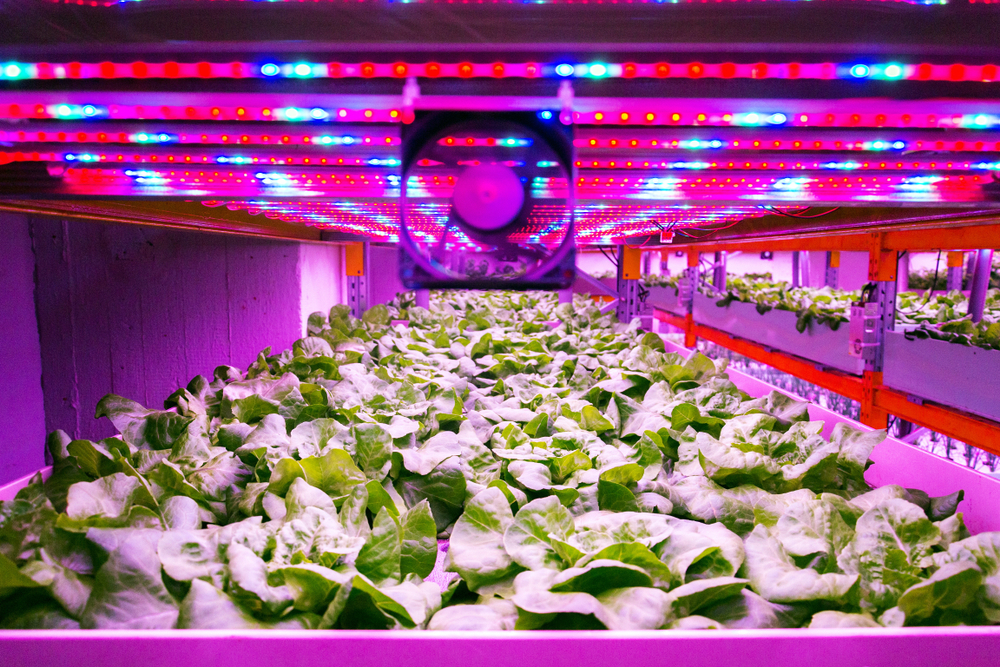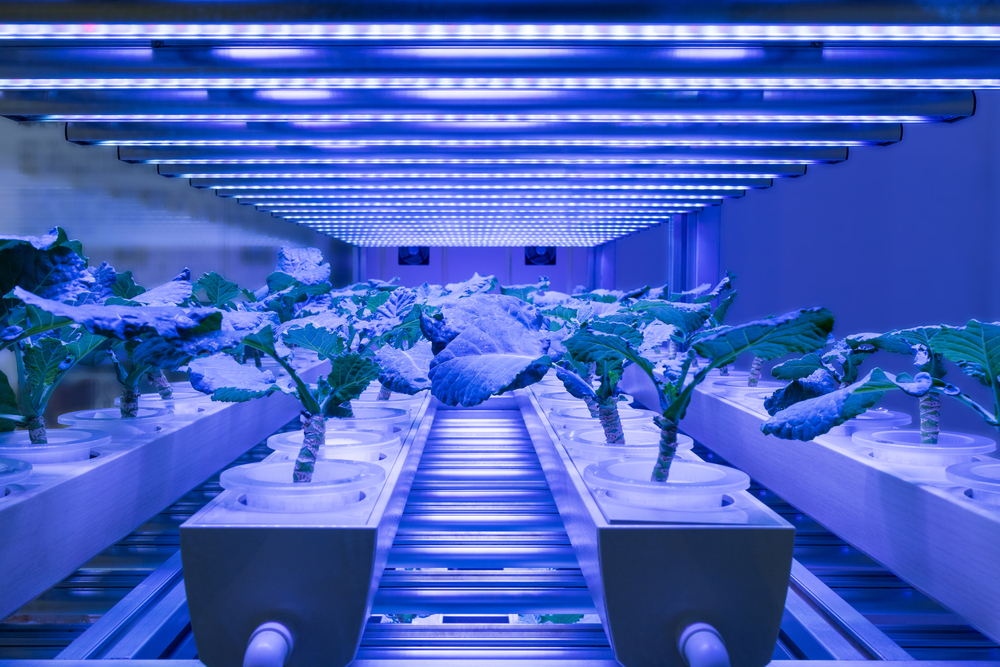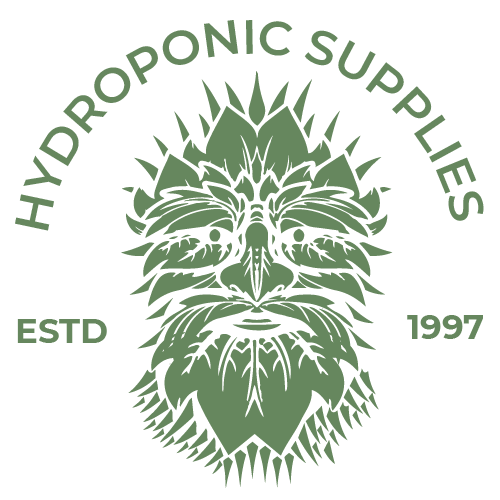
Naturally, cultivating plants inside and out of season brings certain difficulties. To maximize yield, you’ll want to include a variety of hydroponic technologies. Hydroponic grow lights is one of the most important technologies to consider.
Beginners sometimes turn to hydroponics because they wish to grow their own food but lack access to outside area. Although natural sunshine is the best source of light for growing plants, artificial lighting like led grow light hydroponic for indoor systems can be a viable replacement provided it is within the right colour range. Let’s find out the basics and necessary details of hydroponic lighting with Creative Grow Store in this article.
Explore with Creative Grow Store about How Hydroponic Lighting Works:
Why Is Hydroponic Lighting Important?
Traditional farms obtain all of their light from the sun. When growing vegetables indoors, however, you must often replace at least some of the natural light with artificial choices. This is where hydroponic lights may help.
Lighting is an important aspect of hydroponic farming. Proper hydroponic led grow lights will keep your plants healthy and growing, and you should be aware of the type and amount of light you utilise for different sorts of crops. Furthermore, adopting LED grow lights might save both energy and money in the long term.
Hydroponic Plant Light Requirements
Because most hydroponic systems are kept inside, plants require artificial light to grow and thrive. But, what exactly is a hydroponic light system? When selecting hydroponic lighting, growers must consider a number of aspects.
- Understanding the Effect of Light Duration
The photoperiod is the time period inside a 24-hour period during which a plant or other creature gets light. Photoperiodism refers to how a plant responds to the photoperiod. This can have a significant impact on the plant’s development and health.
Plants, in general, decide the season based on the length and quality of light they get. Summer days are longer, and outside plants receive more light. The reverse is true in the winter. This seasonal shift is negligible in tropical places, but frigid climes see a considerable fluctuation from season to season.
You want to emulate the photoperiod of the months when your plants would normally thrive outside when cultivating hydroponic plants indoors. Consider not just the seasons in which these plants thrive, but also the areas where they are often planted.
As the plant grows, you should also adjust the photoperiod. If you’ve picked a crop that’s normally sown in the early spring, gradually increase the photoperiod as the plant matures. Plants seeded in late summer should have their photoperiod reduced over time.
- The Effect of Light Intensity on Plant Growth
Apart from having the best hydroponic lighting system a plant receives each day, the intensity of that light has multiple significant impacts on overall development and health of led growing plant. Light intensity effects plant food production, length of stem/root, leaf colour, and its in-time blooming. Plants cultivated in low light are often seems pale green leaves as compared to the plant cultivated in direct sunlight.
- Light Spectrum:
The colour of the light received by plants is also essential. The frequency of light waves, which is generally measured in wavelengths or nanometers, determines colour. The visible spectrum that we can perceive spans 400 nm (violet) to 780 nm (red). Wavelengths outside of this spectrum include UVA (315-400 nm), UVB (280-315 nm), and infrared (700-1,000 nm). What does this mean for plants, though?
Plant development will be affected differently by different illumination wavelengths. The Lighting Portal (Aydinlatma Portali) provides a handy reference for how each colour affects our crops. Low wavelengths induce plants to blossom, whereas high wavelengths can improve yields. Because of these distinctions, most indoor growers employ a variety of coloured lights.
Different Plants & Requirements:
If you’re growing a variety of plants hydroponically, an electronic timer can come in handy. Different plants required different specifications for their hydroponically growth over time, and they may also require a specific attention span. You must create your own schedule. An electric timer eliminates this hassle and allows you to adjust it as your landscape changes.
· Short-day plants are those that require a long period of darkness to photosynthesize and produce blooms. They will not flower if they are exposed to more than 12 hours of light per day. Poinsettias, strawberries, cauliflower, and chrysanthemums are examples of short-day plants. The short-day cycle mimics natural conditions for plants that bloom in the spring.
· Long-day plants need up to 18 hours of direct sunlight per day. Wheat, lettuce, potatoes, spinach, and turnips are just a few examples. The long-day cycle mimics the native habitat of summer-flowering plants.
· Plants that are day-neutral are the most adaptable. They bear fruit regardless of how much light they receive. Some examples include rice, eggplant, flowers, and corn.
It is preferable to compromise their growth if you decide to blend short- and long-day plants in the same growing environment.
Components of a Hydroponic Light System:

There are various components to consider while setting up indoor lighting for hydroponic plants. These contain lights, a reflector hood, a remote ballast, and a best hydroponic lighting system timer.
Hydroponic Light Bulb Options
While almost any type of bulb may be used to grow plants, some forms of light yield better plants than others. We’ll go through some of the most common hydroponic grow light bulb selections below:
- Leds (Light-Emitting Diodes)
LEDs, or light-emitting diodes, are the most often utilised type of bulb in hydroponic lighting. They are simple to discover, consume less energy than most alternatives, and generate relatively little heat. LEDs also have a high light intensity and do not require a warm-up period to create brilliant hydroponic lights led effect.
Hydroponic led lights are sometimes more expensive up front, but they have a long lifespan and do not deteriorate when switched on and off repeatedly. Growers should be mindful that many led hydroponic lights lose intensity over time, so older bulbs may need to be supplemented as they fade.
LEDs come in a variety of colours, and many growers mix multiple separate colours to produce a broad spectrum. You may also purchase programmable led hydroponic lights.
- Fluorescent Bulbs
Fluorescent lights are yet another popular choice for hydroponic lighting systems. They’re reasonably priced and come in both cold and warm colour schemes. They are less expensive at first than LEDs, but LEDs are often less expensive in the long term since they live longer and require significantly less energy.
Electricity is passed through low-pressure mercury vapour to power fluorescent lamps. This causes the mercury gas to excite and emit ultraviolet light. After that, the UV radiation interacts with the phosphor coating within the bulb to generate fluorescent light.
One notable disadvantage of fluorescent bulbs is that they are classed as hazardous waste due to the presence of mercury. Growers who use these lights must dispose of them properly or recycle them.
- Metal Halide (Mh) Bulbs
Metal halide bulbs are chosen because they have a high amount of blue light in their spectrum. They work best in the early phases of development.
Metal halide lights, like fluorescent lamps, contain mercury. This implies that after the bulbs have ceased operating, you must properly dispose of them. In addition, MH bulbs have a propensity to decrease intensity over time. Growers should regularly monitor light output and supplement or replace bulbs as they fade.
- High-Pressure Sodium (Hps) Bulbs
These bulbs typically emit a red or yellow light spectrum. They are most often found at traffic lights, but they are also prefered by indoor growers during the last phases of plant development.
HPS lights are often extremely energy efficient, which means they are less expensive to operate than many other choices. Cycling is one issue to keep an eye on as people near the end of their lives. This form of cycling may be witnessed if you’ve ever noticed a street lamp blinking on and off. The bulb will continually turn on and off until it just cannot turn on again. When this occurs, the bulb must be changed.
Reflector Hood
After you’ve decided on your hydroponic lighting bulbs, you’ll need a reflector hood. These gadgets are placed behind the bulbs and reflect light back towards your plants. A decent reflector hood may significantly improve lighting efficiency by focusing light onto your plants. It improves the bulb’s efficacy and efficiency by reflecting light down onto the plants from numerous angles, resulting in a more efficient spread. This also enables you to utilise lights that emit less heat, saving you money on power and cooling costs.
Remote Ballast
Plants require a consistent light source to grow properly, and ballasts are one method of doing this. They function as power transformers, ensuring that your lighting receives a steady supply of electricity. On-fixture ballasts are an alternative, but they may produce too much heat for your plants to grow. Most growers, on the other hand, choose a remote ballast option. This keeps hot air away from sensitive plants and makes temperature control easy. Ballasts are particularly useful for growers that use fluorescent lighting systems.
Timer
Lastly, if you want to manage your hydroponic lighting system manually, you’ll need a timer to guarantee the lights turn on and off as needed. This is as easy for certain systems as the sort of timer most people use for Christmas lights. Others see it as a computer system that changes the lighting on the fly to ensure ideal conditions.
Light Positioning in Hydroponics
After you’ve acquired your lighting components, you’ll need to decide where to place your hydroponic lights.
- Choosing the Best Distance
First, consider how far away your lights should be from the plants you’re cultivating. If you get too close, your plants will burn. They’ll wilt if they’re too far away.
The distance between your grow lights and your plants may vary substantially depending on the lighting system you choose. Look for the manufacturer’s advice on appropriate lighting distance if you’ve purchased grow lights particularly built for the purpose. If you designed your own system, some trial and error is likely.
It is recommended to start your lights around 12 inches above your plants. Keep an eye on your crops to see how they react, then adjust your lights up or down as needed to achieve ideal plant health.
- Light Position Adjustment Over Time
Keep in mind that most plants will grow taller over time. Your hydroponic lights bunnings should also be raised over time. If your plants flourish with your hydroponic lighting system around 18 inches above them, you’ll need to keep that distance as they develop.
Conclusion:
Creative Grow Store knows the value of hydroponic lighting as an essential source of plants growth and energy provider. It controls the overall development as well as act like a supplement light for photosynthesis. Hydroponic grow light may be used to modify the duration of the day, which can affect plant development. Shorter days with more light, for example, promote faster development, whereas longer days with less light promote slower growth. As a result, gardeners that wish to regulate the growth and form of their plants need use illumination.
